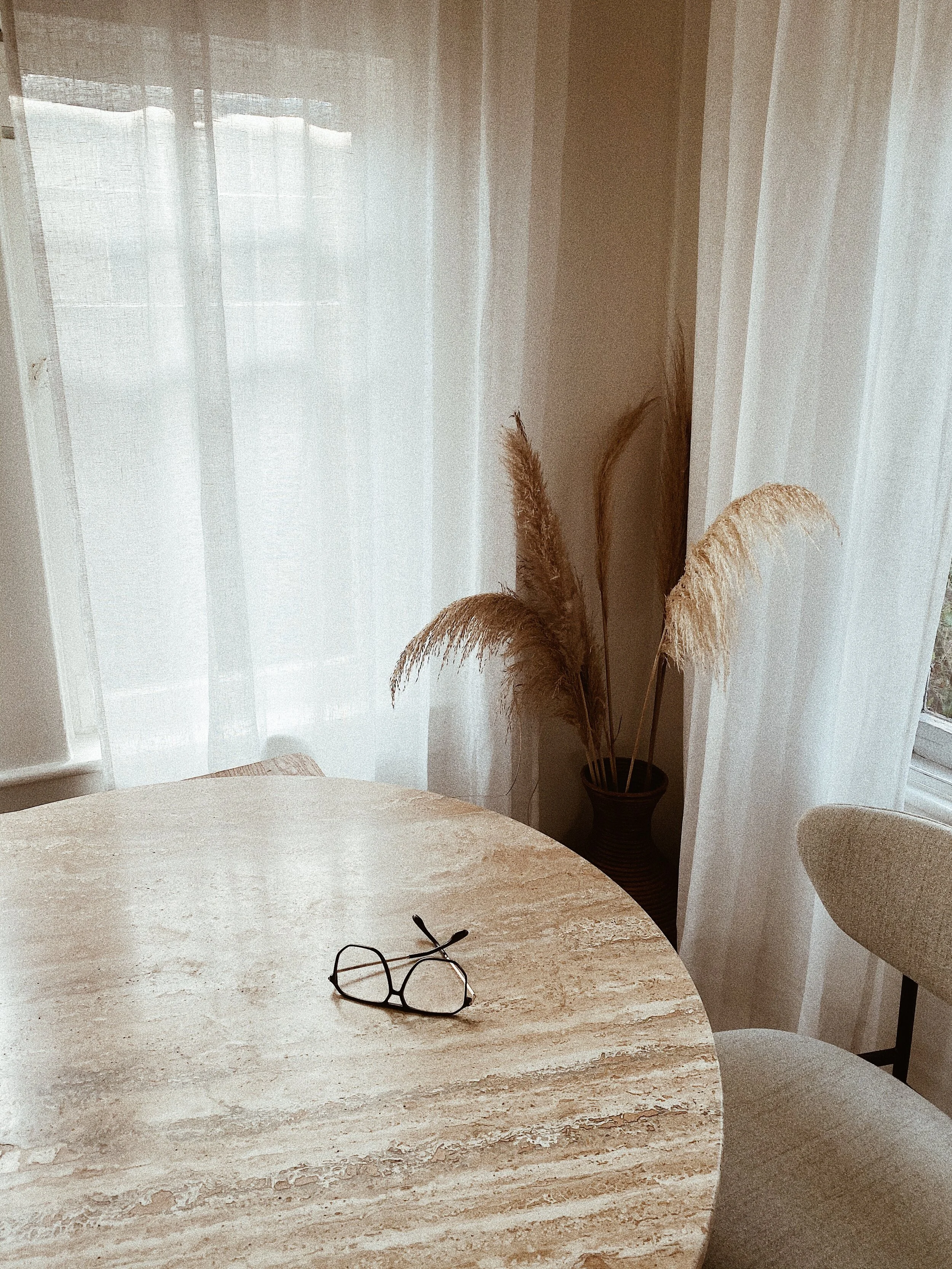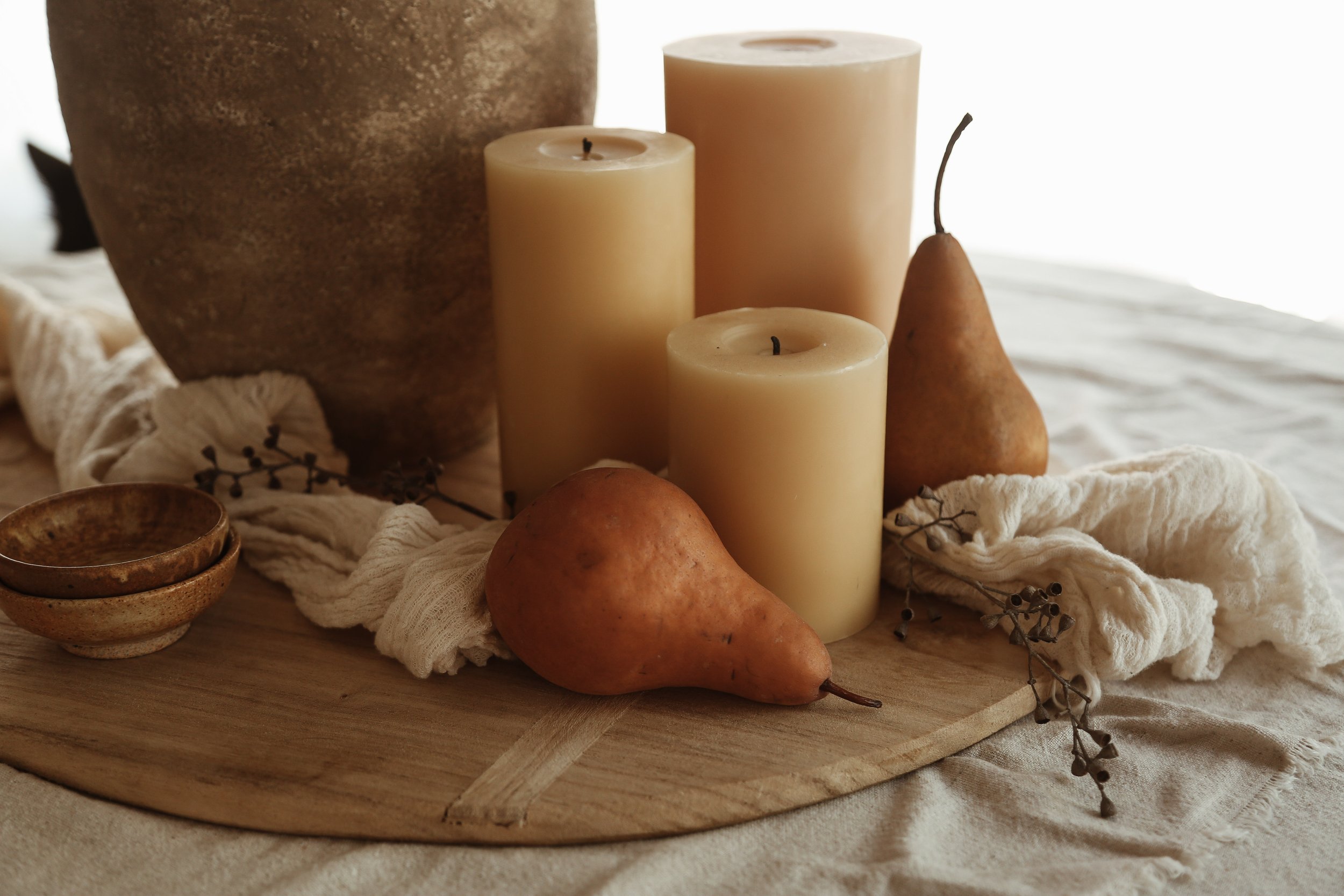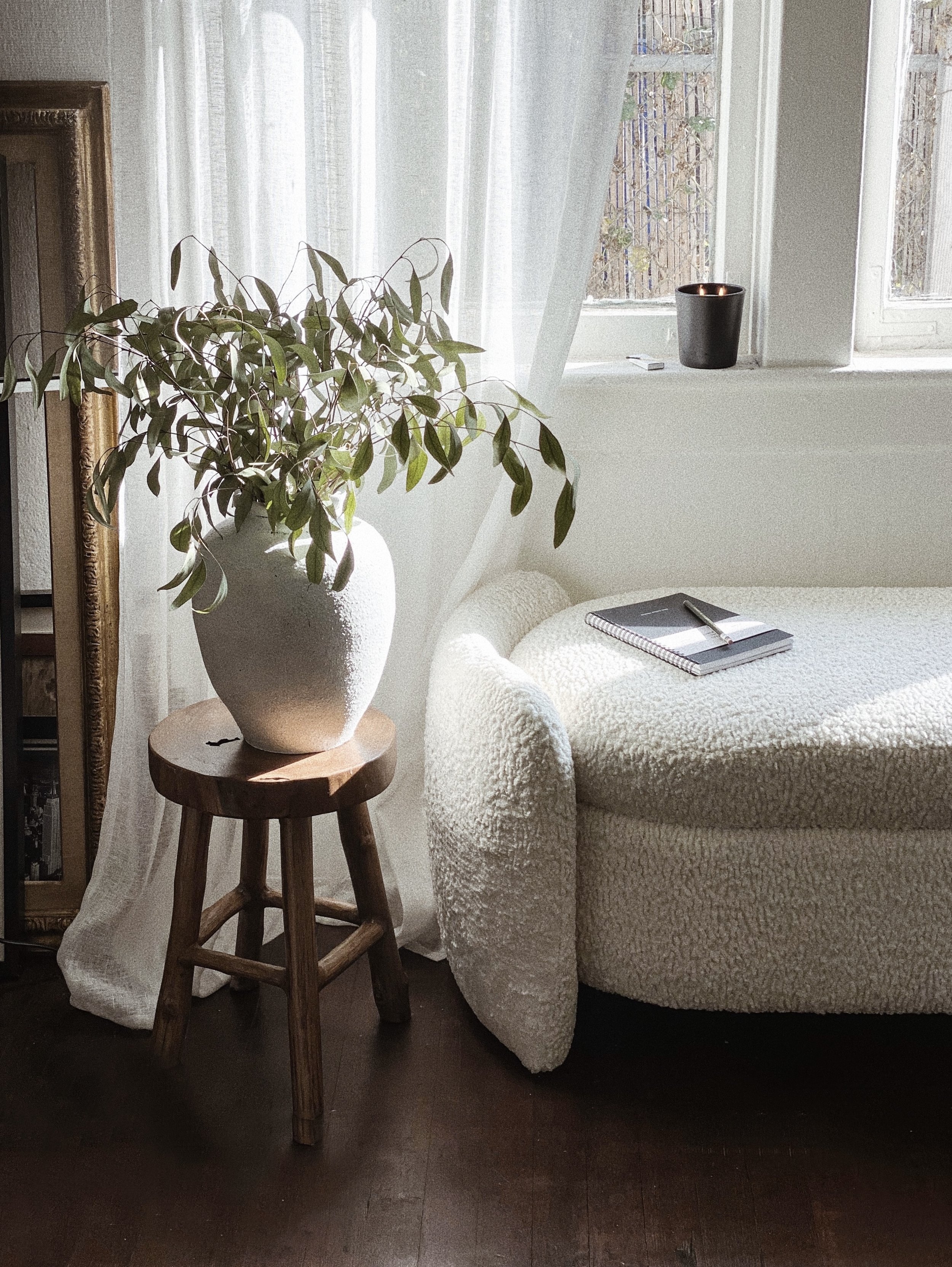Notes On // Travertine Marble

When I recently shared our travertine table top,
that we scored on FB marketplace, over on my Instagram, it seemed to be quite the hit. I say “seemed” because, while I did get a lot of messages about it, maybe everyone was just being extra nice and supportive of me being excited (lolz)?! Either way, since I’m obsessed with our new table, and travertine in general, I’m taking it as an excuse to create a space to curate travertine marble pieces that I find and love (and hope you will, too).
For those that don’t know, travertine, which is frequently referred to as travertine marble, is technically actually a natural stone, and not marble, because it’s formed from limestone deposits in hot springs. This limestone is affected by additional heat and pressure, applied by the earth’s crust, which in turn causes it to create the travertine stone. Because of how it is formed, travertine is very porous, so one of its’ distinct characteristics is lots of holes, dips and divots which are caused by the carbon dioxide evasion. These holes are often filled in or sanded down, polished and glazed over so they aren’t as noticeable in finished products. However, you might notice them in a raw travertine piece.
While you can find travertine around the world, one of the most popular (and best) sources for it is in Italy. It comes in natural, white, tan, and cream colors (aka it fits perfectly in my oat milk latte colored world) and its’ coloring is one of the reasons why it’s so popular. However, it’s also a hit with people because it’s durable and water resistant (unlike traditional marble).
While past uses of this stone can be a bit ostentatious and over-the-top, there are plenty of ways to incorporate it into your current decor without it looking dated and gaudy. It should go without saying, but avoid pairing it with dated materials (things like dark red-toned wood cabinets), and instead play into the natural component of the material by pairing it with other natural materials, think things like linens, woods, other stone, muted plants (like olive trees, pampas grass, etc.), to name a few.
Certain travertine pieces can get pretty pricey, but it’s actually more affordable than marble, so there are plenty of more reasonably priced way to use it in your home. Below, I’ve included a mix of pieces, in a range of prices, so that no matter what your budget is, if you love travertine and are looking for a way to incorporate it into your decor, you can do so.







